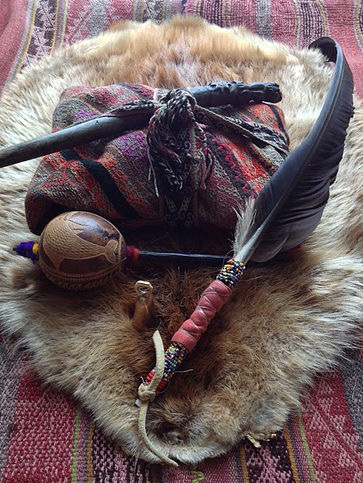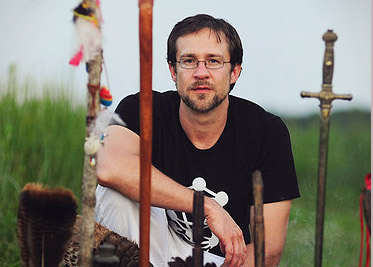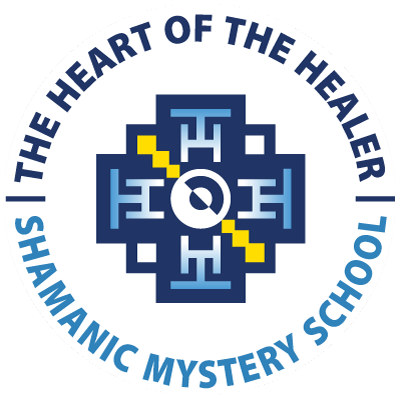Despite how far you go with something you must always revisit the basics, to reinforce your foundation. With the mesa it is no different. So, let’s explore the core elements of what the mesa is and why we use it.

Put very simply: a mesa is an altar that is used shamanically for healing and connection with the natural world. An altar is a created space where religious rites are performed to gain access and connection to whatever source of spiritual awareness one may have (God, Goddess, Nature, etc.). Anyone can use a mesa, there is no canonical order or hierarchy of priesthood/priestesshood one must go through in order to work with it. The mesa is a very personal, individualized tool one uses in their own spiritual work. One way to see the mesa, as noted by shamanic practitioner Matthew Magee, is as “a living control panel, co-created by Spirit and the curandero , to become a vehicle for experiencing the ineffable.”1
The word mesa is a Spanish term, which literally means “table.” It denotes the typically flat surface area in which a mesa is generally used. That the mesa is a table can also symbolize the table in which a family gathers to feast, just as we gather to feast upon the fruits of our communion with Spirit.
The mesa geographically originates in the Latin Americas, most specifically Peru. There are many styles and variations depending on both the region and the individual user. Like most shamanic lineages, this makes pinpointing a distinct and categorical tradition of the mesa sometimes challenging. In essence, there is no one way or tradition of the mesa that is the way; however, there are some basic “denominations” of traditions that the mesa can be classified into, especially in terms of the lineage of the Pachakuti Mesa Tradition.
NORTHERN COASTAL CURANDERISMO
The curanderos (curers/shaman) of the Northern coastal region of Peru are shamanic folk-healers with roots dating back to the ancient Chavín culture, approximately 900 BCE. The layout of a curandero’s mesa in the Northern coastal traditions usually consist of a manta cloth laid on the ground (or sometimes a table) with an assemblage of sacred artifacts (called artes) arranged on top of it. These artes act as tools for the curandero’s use to conduct healing on others, assist in divination, and commune with the unseen world of Spirit. The assemblage of these objects is very personal in accordance with a curandero’s own spiritual guidance and training.
On the other hand, there does seem to be an overall theme most curanderos follow on the Northern coast, which makes their tradition distinct. A Northern coastal mesa is often divided into three vertical sections, called campos. Each one of these campos designate the type or style of healing that is being performed on the client. In a nutshell, these campos are divided into left, middle, and right sections of the mesa:
- Left: called the campo ganadero, works with dispatching and releasing dense energies.
- Middle: called the campo medio, works with balance and integration.
- Right: called the campo justicerio, works with raising energy and bringing good fortune.
Artes are placed specifically in those sections to match the particular curing power of the healing object. These campos, though distinct, collaborate within a collective field of participation which mirrors the curandero’s own interpersonal cosmology. As noted by Ross Heaven, prolific author of shamanic practices, “the mesa can be regarded as a representation of divine (rather than human) scales of justice where the goal is equilibrium and order, not a weighted outcome in favour of ‘light’ or ‘dark’ . . .”2
ANDEAN PAQOKUNA
The paqokuna are a class of shamanic healer-priests of the Quechua peoples that live in the highlands of the Andes Mountains in Peru. The Quechua are the direct descendants of the Incas (1400 CE) and have maintained as much of their heritage as possible through centuries of colonialism. Unlike the open mesa of the Northern coastal curanderos, the Quechua paqokuna (also called paqos) operate their rites with the mesa as a closed bundle. Most paqos very rarely open their mesas, if at all. The bundle is full of sacred artifacts similar to the curandero’s mesa, though they generally refer to these healing objects as khuyas.
The bundled nature of the paqo’s mesa is very fitting to the cultural framework of the Quechua. The Quechua are farmers and lama herders; they spend much of their time working in the soil and hiking the treacherous landscape of the Andean highlands. So, a paqokuna mesa needs to be resilient and able to travel. Therefore, a bundled mesa is natural solution that works well for the agricultural society of the Quechua.
Author J.E. Williams, who spent years with the Quechua in study, states: “Much like North American medicine men who carry the objects of their trade in a bundle that they keep by them at all times, Q’ero paqos carry objects they find in the mountains, that come to them directly from other dimensions, or that are given to them by another shaman.”3
THE PACHAKUTI MESA
Trained in both the Northern coastal curanderismo and Andean paqokuna traditions, don Oscar Miro-Quesada was tasked by his teachers to bring the medicine of the mesa to the Western world in the hopes steering humanity’s course away from destruction and toward a more meaningful relationship with the natural order. don Oscar understood the task before to be a difficult one, as the concepts of indigenous shamanism often do not translate well to modern convention. Inspired by the Eastern concept of the mandala, and seeing its correlations with the mesa as it was taught to him, don Oscar developed a new understanding and usage of the mesa called the Pachakuti Mesa Tradition (PMT).
Pachakuti is a Quechua term which means “transformation,” or more literally “turning over the earth.” It is the name given to the tilling process the Quechua use before planting their crops. Likewise, it is the name given to the alchemical process which one undergoes during apprenticeship into the PMT. The Pachakuti Mesa is designed to enact transformation, on both a personal and planetary scale.
Integrating the lineages from both the Northern coast and the Andes, don Oscar has formulated a unique altar set with cross-cultural (not just Peruvian) applications. As in most shamanic traditions, the Pachakuti Mesa is arranged in such a way that it honors the directions of the compass, as well as incorporating a fifth direction as a unifying axis point. Each direction carries with it a collection of elements, archetypes, and attributes that represent inherent powers of the natural world. The directions represented are:
- South: called Pachamama (Mother Earth), which honors the element of earth.
- West: called Mama Killa (Grandmother Moon), which honors the elements of water.
- North: called Wiracocha (Great Spirit), which honors the element of air.
- East: called Inti (Father Sun), which honors the element of fire.
- Center: called K’uychi (Rainbow), which honors the element of aether.
This framework, fostered through the meticulously designed Pachakuti Mesa Tradition Apprenticeship Series, assists the practitioner in garnering a rapport with the natural forces of the unseen realms. This is an essential component to any sort of shamanic path: building a relationship with the spiritual forces of the universe. This marriage of soul should result in stewardship for our planet and all living creatures.
As don Oscar himself says in his book Lessons in Courage, “In the Pachakuti Mesa Tradition, our shared visionary focus is to harness the power of creation from spirit, as did our ancestral peoples, and to properly channel it so that it serves the entire Earth community.”
don Oscar Miro-Quesada in front of his mesa.
FOOTNOTES
1. Magee, Matthew. Peruvian Shamanism: The Pachakuti Mesa, p. xvi.
2. Heaven, Ross. The Hummingbird’s Journey to God: Perspectives on San Pedro, the Cactus of Vision, p. 57.
3. Williams, J.E. The Andean Codex: Adventures and Initiations Among the Peruvian Shamans, p.47.
4. Glass-Coffin, Bonnie & don Oscar Miro-Quesada. Lessons in Courage: Peruvian Shamanic Wisdom for Everyday Life, p.116.
About the Author
Daniel Moler is a writer, artist, and sanctioned teacher in the Pachakuti Mesa Tradition. He is the author of Shamanic Qabalah: A Mystical Path to Uniting the Tree of Life and the Great Work from Llewellyn Worldwide, Machine Elves 101, RED Mass, as well a contributor in Ross Heaven’s book on Peruvian healing Cactus of Mystery and Llewellyn’s 2020 Magical Almanac. He has published fiction and nonfiction works around the world in magazines, journals, gaming modules, and online, including: GrahamHancock.com, Positive Health Magazine, Cannabis Culture, The Tattooed Buddha, Sacred Hoop, and A Journal of Contemporary Shamanism. Visit Daniel online at www.danielmolerweb.com.





